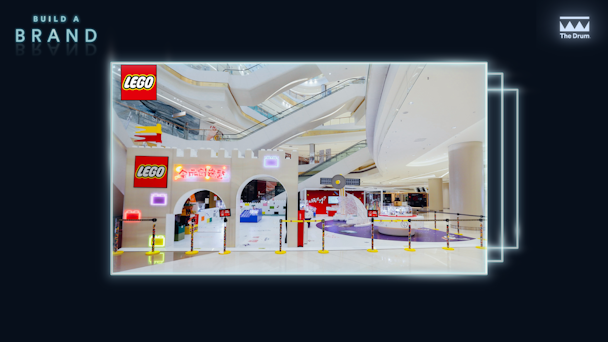Lessons from Lego on how to build an experiential campaign
The experiential experts know how to unlock imaginations. This is how you build it like Lego.

Lego experiential event Inspiration Wonderland
Lego is the master builder of experiential experiences, understanding that physical play has lost none of its importance in the digital era. The toy brand uses experiential marketing for both brand awareness and driving sales and encouraging app or membership sign-ups.
To mark Children’s Day, Lego tasked the experiential agency Imagination to create an in-person interactive play experience for kids. Inspiration Wonderland was developed as a pop-up play space inside shopping malls in nine different Chinese cities, each site within reach of a Lego store.
Advertisement
The activation used a blend of tech and physical play and was planned to be just as engaging for parents as it was for their kids. It attracted 104,000 visitors of which 91% visited the Lego store afterwards. It also garnered 126,000 engagements and led to 77% of visitors signing up to be new Lego members.
Creative director at Imagination, James Worsham, was behind Inspiration Wonderland. He reveals to The Drum the inner workings of the campaign and offers his top tips for experiential marketing.
The brief leaned into Lego’s brand platform: ‘What’s the Right Way to Play?’ with the brand wanting to find ways to show that both structured and unstructured play helps kids’ development.
“A plethora of data is available, but most time-poor parents will not be inclined to wade through scientific white papers,” Worsham says of the early stage thinking. “So our initiative was not to lecture instead, we wanted to involve the parents in the play sessions too, letting them see firsthand how a child’s imagination can be a source of achievement and development.”
The concept was a complete experiential journey that tried to kick-start a conversation about how parents perceive play and then put those perceptions to the test.
Advertisement
As parents and children walked through the space they had to complete different quests and challenges through the screens and toys around them. The activities then linked up to an app called WeChat which would track the child’s progress and unlock in-store rewards.
“Each challenge [leveraged] Lego as a vehicle to unlock the child’s imagination, and with each challenge accomplished, a piece of our ‘Quest Map’ puzzle was revealed, an 8x8 Lego base plate meant as an open canvas for creation – a star, animal, Chinese character, heart, abstraction, or anything that sparks their creativity.”
The final part of the ‘quest’ was The Star Square which allowed visitors to upload their quest and have their progress represented as a star alongside the other children’s results.
“The touchpoint leveraged a bespoke scanner detecting each Lego brick and reconstructing them in the digital realm, finishing off with a final ceremonial moment that saw the creation burst into life across the Star Square’s night sky.”
Challenges
Lego wanted to literally send the children’s creations into space and launch them in a genuine CCP satellite to align with the Children’s Day event.
“This sparked the format of our ‘Star Square’ also sending our visitors’ creations into space to continue to live on. It also helped form the direction of the centerpiece, turning it into a Lego set satellite in orbit over the large play table,” Worsham says.
Suggested newsletters for you
Imagination needed to find ways to present facts to parents about the value of play and find out how parents’ perceptions changed after the pop-up experience.
“As part of the onboarding process to the mini-program, we included a short and focused quiz on the value of play. Then at the end of the ‘Star Square’ experience, we presented the wider results of the quiz posing the same question again to show real value and change in perception,” Worsham says.
Worsham’s top 3 tips for creating an experiential campaign
1) Don’t neglect co-creation to create a stronger bond between the topic and visitors
“We realized perceptions likely won’t be changed with facts alone. By including focused hands-on and relatable tasks to be shared between parent and child, we were able to prove the value of play through our ‘Quest for Creation’ challenges.”
2) Tactile experiences have higher rates of recall – physical interactions are impactful in our digital age
“Studies show the value of hands-on tactile play in development and recall. In a space where it might be a first instinct to create a pure digital interaction, take a step back to assess if a physical interaction wouldn’t be better suited.”
3) Positive, connected brand experiences have a higher rate of conversion to brand advocacy
“The Lego Inspiration Wonderland saw a 77% conversion rate to new Lego members, this was due to our connected journey between the physical pop-up and digital companion.”

